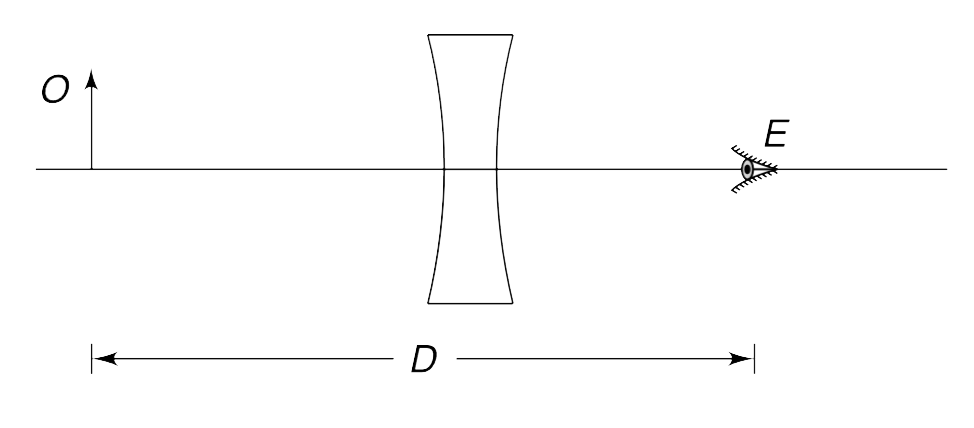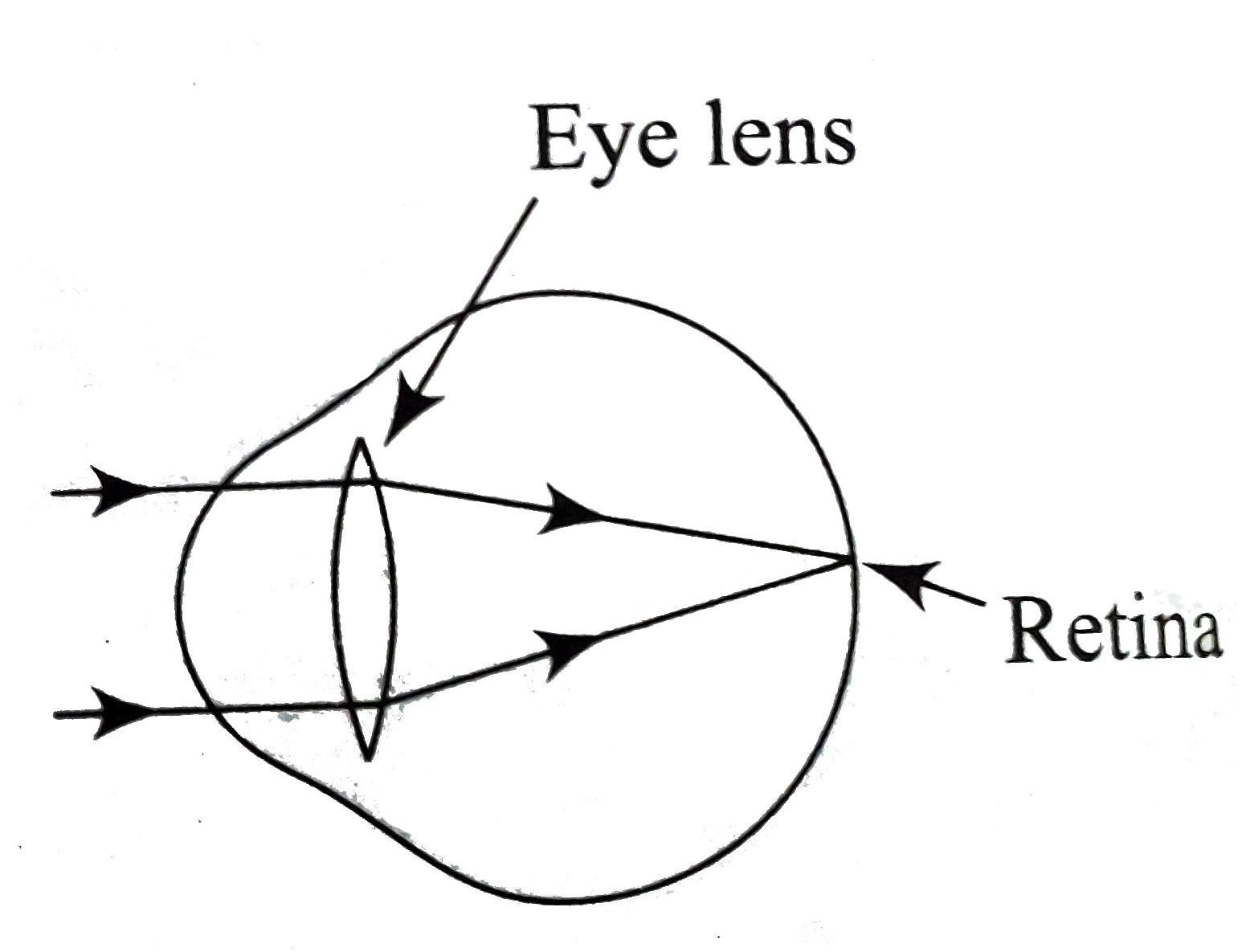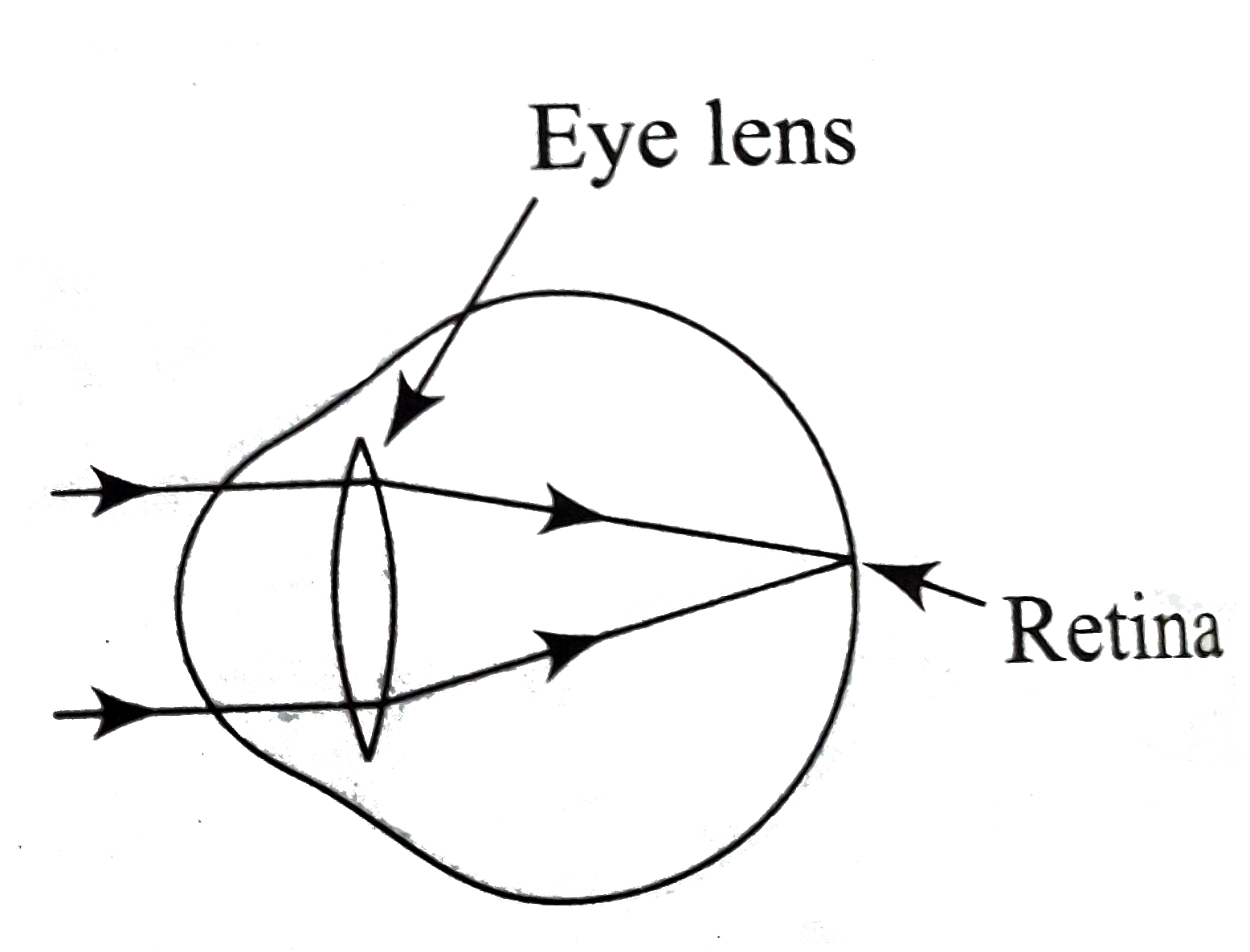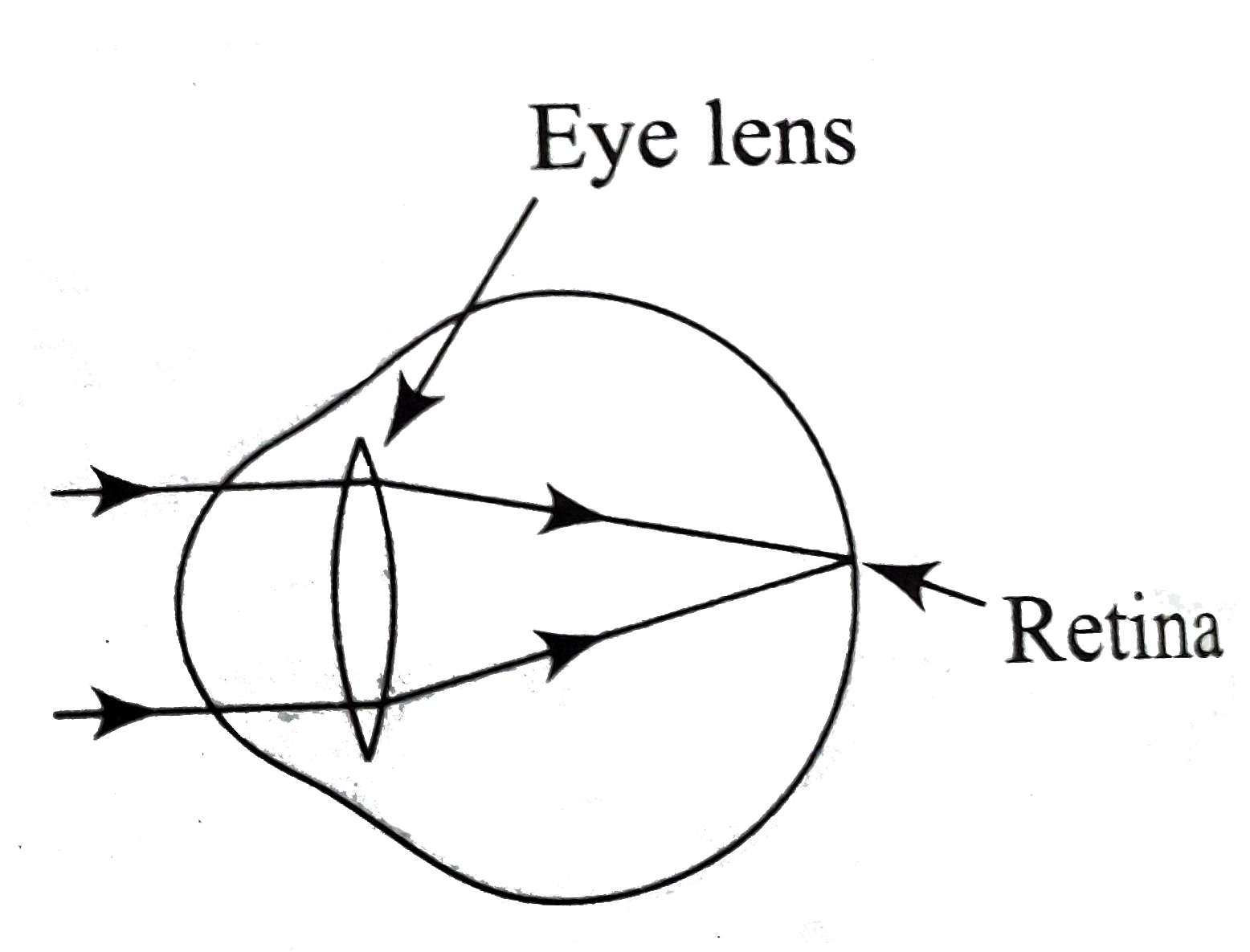A : 3-D movies are produced by pojecting two images onto a screen, with polarizing dissections that are relative to one another.
R : When your eyes view 3D wearing 3D glasses, your right eye sees one view and left eye sees the other view, these views combines in the brain and produce 3D effect.
Both A and R are true and R is the correct explanation of A
Both A and R are true and R is not the correct explanation of A
A is true and R is false
Both A and R are false
The correct Answer is:B
Topper's Solved these Questions
- WAVES OPTICSBook:AAKASH SERIESChapter:WAVES OPTICSExercise:EXERCISE -II (INTERFERENCE)
Explore 27 Videos
- WAVES OPTICSBook:AAKASH SERIESChapter:WAVES OPTICSExercise:EXERCISE -II (DIFFRACTION)
Explore 17 Videos
- WAVES OPTICSBook:AAKASH SERIESChapter:WAVES OPTICSExercise:EXERCISE -IA (ASCENDING AND DSCENDING ORDER TYPE QUESTIONS)
Explore 6 Videos
- WAVESBook:AAKASH SERIESChapter:WAVESExercise:EXERCISE-III (Doppler effect :)
Explore 15 Videos
Similar Questions
Consider the situation in figure. The bottom of the pot is reflecting plane mirror , S is small fish is a human eye . Refractive index of water is μ. Fish can see two images of human eye , first due to refractive only and other due to refraction and than reflection . Distance of these images from fish are S1andS2 respectively . Human eye can also see the two images of fish, first due to refraction only and other due to reflection and then refraction . Distance of these images from human eye are S3andS4 respectively . Match the quantities of column-I (with their value in column-(II)
_E01_093_Q01.png)
Column IColumn II(A)S1(p)H[1+12μ](B)S2(q)H[μ+12](C)S3(r)H[1+32μ](D)S4(s)H[μ+32]
View SolutionO is a small object placed at a distance D from the eye E of an observer. A concave lens of focal length f(∠D) is placed near to the eye and image of the object is viewed. Now the lens is moved towards the object O, away from the eye.
(a) Show that the angle subtended by the image at the eye first decreases and then increases as the lens is moved away from the eye.
(b) Find the distance of the lens from the object when the apparent size of image is smallest.

View Solution
Knowledge Check
A telescope is an optical instrument used to increase the visual angle of distant objects such as stars, planets etc.
An astronomical telescope consists of two converging lenses. The one facing the object is called objective and the lens close to the eye is called an eyepiece. It can be adjusted by displacing relative to the objective. The angular magnification is defined as the ratio of focal length of objective and eyepiece. One can see the image with unstrained eye if it forms at infinity. An astronomical telescope has an objective of focal length 50 cm and a magnification of 20. To view remote object by an unstrained normal eye separation between two lenses will beA55 cmB57.5 cmC60 cmD52.5 cmThe ciliary muscles of eye control the curvature of the lens in the eye and hence can alter the effective focal length of the system. When the muscles are fully relaxed, the focal length is maximum. When the muscles are strained, the curvature of lens increases. That means radius of curvature decreases and focal length decreases. For a clear vision, the image must be on the retina. The image distance is therefore fixed for clear vision and it equals the distance of retina from eye lens. It is about 2.5cm for a grown up person.
A perosn can theoretically have clear vision of an object situated at any large distance from the eye. The smallest distance at which a person can clearly see is related to minimum possible focal length. The ciliary muscles are most strained in this position. For an average grown up person, minimum distance of the object should be around 25cm.
A person suffering from eye defects uses spectacles (eye glass). The function of lens of spectacles is to form the image of the objects within the range in which the person can see clearly. The image o the spectacle lens becomes object for the eye lens and whose image is formed on the retina.
The number of spectacle lens used for th eremedy of eye defect is decided by the power fo the lens required and the number of spectacle lens is equal to the numerical value of the power of lens with sign. For example, if power of the lens required is +3D (converging lens of focal length 100/3cm ), then number of lens will be +3.
For all the calculations required, you can use the lens formula and lensmaker's formula. Assume that the eye lens is equiconvex lens. Neglect the distance between the eye lens and the spectacle lens.

Q. A far sighted man connot see objects clearly unless they are at least 100cm from his eyes. The number of the spectacle lenses that will make his range of clear vision equal to an average grown up person will beA+1B1C+3D3A point object is placed on the optic axis of a convex lens of focal length f at a distance of 2f to the left it. The diameter of the lens d. An eye is placed are distance of 3f to the right of the lens and a distance below the optic axis. The maximum value of h to the image is
AdBd/2Cd/3Dd/4
The ciliary muscles of eye control the curvature of the lens in the eye and hence can alter the effective focal length of the system. When the muscles are fully relaxed, the focal length is maximum. When the muscles are strained, the curvature of lens increases. That means radius of curvature decreases and focal length decreases. For a clear vision, the image must be on the retina. The image distance is therefore fixed for clear vision and it equals the distance of retina from eye lens. It is about 2.5cm for a grown up person.
A perosn can theoretically have clear vision of an object situated at any large distance from the eye. The smallest distance at which a person can clearly see is related to minimum possible focal length. The ciliary muscles are most strained in this position. For an average grown up person, minimum distance of the object should be around 25cm.
A person suffering from eye defects uses spectacles (eye glass). The function of lens of spectacles is to form the image of the objects within the range in which the person can see clearly. The image o the spectacle lens becomes object for the eye lens and whose image is formed on the retina.
The number of spectacle lens used for th eremedy of eye defect is decided by the power fo the lens required and the number of spectacle lens is equal to the numerical value of the power of lens with sign. For example, if power of the lens required is +3D (converging lens of focal length 100/3cm ), then number of lens will be +3.
For all the calculations required, you can use the lens formula and lensmaker's formula. Assume that the eye lens is equiconvex lens. Neglect the distance between the eye lens and the spectacle lens.

Q. A far sighted man connot see objects clearly unless they are at least 100cm from his eyes. The number of the spectacle lenses that will make his range of clear vision equal to an average grown up person will be
View SolutionA point object is placed on the optic axis of a convex lens of focal length f at a distance of 2f to the left it. The diameter of the lens d. An eye is placed are distance of 3f to the right of the lens and a distance below the optic axis. The maximum value of h to the image is
View SolutionSunny Dayal is a car driver working for Mr. Khanna. One day Sunny Dayal complained that he had difficulty in driving car because he could not see the distant traffic (car, buses, scooters, motorcycles and people) clearly though he could see the nearby things clearly. Mr. Khanna took Sunny Dayal to an eye hospital. The eye-specialist doctor checked and tested his eyes with various machines and gave him the name and power of lenses to be worn as spectacles. Mr. Khanna paid for the required spectacles for the driver. By wearing these spectacles, the driver could now see even the distant vehicles and people on the road clearly. He thanked Mr. Khanna for this.
(a) Name the eye defect Sunny Dayal is suffering from.
(b) What could be the two possible reasons for his eye defect ?
(c) What type of lenses do you think have been recommended for Sunny Dayal's spectacles and why ?
(d) Do you think Sunny Dayal has to wear these spectacles all the time ? Give reasons for your answer.
(e) What could have been the risk if Mr. Khanna had not taken sunny Dayal to eye specialist doctor for the correction of vision by wearing spectacles ?
(f) What values (or qualities) are displayed by Mr. Khanna ?
View SolutionThe ciliary muscles of eye control the curvature of the lens in the eye and hence can alter the effective focal length of the system. When the muscles are fully relaxed, the focal length is maximum. When the muscles are strained, the curvature of lens increases. That means radius of curvature decreases and focal length decreases. For a clear vision, the image must be on the retina. The image distance is therefore fixed for clear vision and it equals the distance of retina from eye lens. It is about 2.5cm for a grown up person.
A perosn can theoretically have clear vision of an object situated at any large distance from the eye. The smallest distance at which a person can clearly see is related to minimum possible focal length. The ciliary muscles are most strained in this position. For an average grown up person, minimum distance of the object should be around 25cm.
A person suffering from eye defects uses spectacles (eye glass). The function of lens of spectacles is to form the image of the objects within the range in which the person can see clearly. The image o the spectacle lens becomes object for the eye lens and whose image is formed on the retina.
The number of spectacle lens used for th eremedy of eye defect is decided by the power fo the lens required and the number of spectacle lens is equal to the numerical value of the power of lens with sign. For example, if power of the lens required is +3D (converging lens of focal length 100/3cm ), then number of lens will be +3.
For all the calculations required, you can use the lens formula and lensmaker's formula. Assume that the eye lens is equiconvex lens. Neglect the distance between the eye lens and the spectacle lens.

Q. A near sighted man can clearly see ojects only upto a distance of 100cm and not beyond this. The number of the spectacle lenses necessary for the remedy of this defect will be
View SolutionThe ciliary muscles of eye control the curvature of the lens in the eye and hence can alter the effective focal length of the system. When the muscles are fully relaxed, the focal length is maximum. When the muscles are strained, the curvature of lens increases. That means radius of curvature decreases and focal length decreases. For a clear vision, the image must be on the retina. The image distance is therefore fixed for clear vision and it equals the distance of retina from eye lens. It is about 2.5cm for a grown up person.
A perosn can theoretically have clear vision of an object situated at any large distance from the eye. The smallest distance at which a person can clearly see is related to minimum possible focal length. The ciliary muscles are most strained in this position. For an average grown up person, minimum distance of the object should be around 25cm.
A person suffering from eye defects uses spectacles (eye glass). The function of lens of spectacles is to form the image of the objects within the range in which the person can see clearly. The image o the spectacle lens becomes object for the eye lens and whose image is formed on the retina.
The number of spectacle lens used for th eremedy of eye defect is decided by the power fo the lens required and the number of spectacle lens is equal to the numerical value of the power of lens with sign. For example, if power of the lens required is +3D (converging lens of focal length 100/3cm ), then number of lens will be +3.
For all the calculations required, you can use the lens formula and lensmaker's formula. Assume that the eye lens is equiconvex lens. Neglect the distance between the eye lens and the spectacle lens.

Q. A person can see objects clearly from distance 10cm to ∞. Then, we can say that the person is
View Solution
